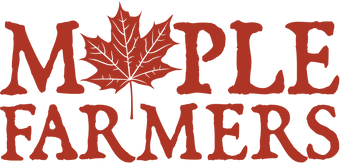Click here to view a PDF of the Vermont Maple Syrup Tasting Guide
The keynote speaker at a Vermont Maple Sugar Makers Association conference recently stated that “every maple farmer makes a different tasting maple syrup ~ every day”. As a proponent of small-batch syrup, that sentiment resonates with me. The flavors of pure maple syrup do vary from day-to-day, season-to-season, and farm-to-farm.
Whether it is floral notes, a butterscotch bouquet, or a hint of chocolate, the different flavors of pure maple syrup are truly a delight for the senses. As Rowan Jacobsen wrote in American Terroir, “When you do sip your way through a few ‘syrup flights’, you quickly realize that maple syrups are wildly different once you get beyond that great bear hug of sweetness.”
These ‘wildly different’ flavor profiles are found in pure, unadulterated maple syrup. They are not from added flavors, infused syrup, or any sort of barrel-aging process. The diversity of flavors come from the trees and the processing of the tree sap into maple syrup. Nothing else.
What Impacts Maple Syrup Flavors?
The different flavors of pure maple syrup are affected by a multitude of factors. These include the genetics of the trees, the soil profile and climate where the trees grow, the annual weather patterns, and the processing methods of the syrup.
In the world of winemaking, the soil, topography, and climate of an area is referred to ‘terroir’. With a product like maple syrup that comes entirely from the forests, there is no doubt that the terroir of the sugarbush has significant influence on the flavor of the final product. Year after year, my syrup is often described as having floral notes. The sugarmakers that tap trees further down the same ridge as me have remarked that both of our syrups have a little more red hue than other syrups. Surely some of these consistent characteristics are related to the unique terroir of our forest.
Annual weather patterns during the sugaring season also greatly impact flavor. As the weather warms and the trees wake from their winter slumber, the chemistry of the maple sap changes. In the early season, the sap is crystal clear with the highest sugar content, and the most delicate flavors are produced. In the late season the sap can become cloudy, the syrup darkens, and the flavors become stronger.
The processing methods of the maple syrup can also have dramatic effects. Maple sap is a perishable product and natural bacteria begin to alter the sugars once the sap is out of the tree. How the sap is handled and how quickly the sap is boiled can impact the flavors. Cold storage and prompt processing of the sap generally makes for a lighter syrup with more delicate flavors.
Modern technology has enabled producers to use reverse osmosis to concentrate the sap to exceedingly high sugar content levels. Read this if you want to know more about reverse osmosis. There is much concern and debate in the industry over the impact to flavor when the syrup is primarily made with this high-pressure filtering followed by minimal ‘cooking’ over a flame. The concern is that the bouquet and caramelization associated with the characteristic maple syrup flavor does not get a chance to develop if it is not cooked long enough.
Another new technology with serious impacts to flavor is steam processing of maple syrup. In these evaporators, pipes filled with steam at around 300F are used to boil the sap. This temperature is dramatically less than the roughly 1500F that a fire under the evaporator pan would create. While both processes will boil the sap and create maple syrup, the chemistry changes in the syrup are undoubtedly different. With steam processes generally combined with high reverse osmosis levels and very fast cooking times, one might wonder if the resulting flavor would be like comparing a boiled onion to a caramelized onion.
No one truly understands the chemistry of the different maple syrup flavors. Honestly, I hope we never do. I love that every syrup on every day can taste a little bit different and that there really isn’t that much we can do to control those flavors. This is the magic that is maple syrup.
The Map of Maple
In 2013, the University of Vermont worked in conjunction with the Vermont Agency of Agriculture Food and Markets, a team of researchers, and sugarmakers to develop what they called a Map of Maple. The Map breaks down the many aromas and flavor profiles that can be found in pure Vermont maple syrup. There are also hints for how to taste maple syrup, and encouragement to discuss with others to compare tasting notes.
We are excited to have received permission from the University of Vermont Nutrition and Food Sciences Department to re-print a slightly modified version of their Map of Maple. We re-sized a little bit so it could fit into our Vermont maple syrup sampler packs. Click here to view a PDF of the Vermont Maple Syrup Tasting Guide.
- Start with smelling the maple syrup to identify distinct aromas.
- Take a sip and appreciate the ‘mouthfeel’. Vermont maple syrup is, by law, just a little sweeter than most other states and Canada so you may sense that in the feel of the syrup.
- Try another sip and consider the flavors which are the combination of the aromas and the taste. The Tasting Guide will help to identify the unique flavors of the pure maple syrup.
Finally, share your reactions with others. Hearing what others take away from the tasting can be eye-opening. We often have very different experiences. Most of all, have fun sampling different maple syrup and enjoying the wildly different flavors!

